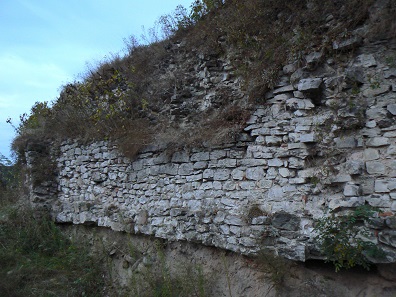by Björn Schöpe
translated by Christina Schlögl
March 1, 2018 – Finding a large coin hoard in the Bulgarian city Mezdra in the summer of 2017 lead archaeologists to remnants of a settlement from Roman times (1st until 3rd century AD). The excavators possibly found a hitherto unknown town, as the portal ‘Archaeology in Bulgaria’ reported.
Everything started in an abandoned yard in Mezdra. A resident uprooted an old plum tree and smashed a ceramic jar beneath the roots with his axe. The vessel contained a treasure. A photo that was taken immediately after the find has led people to assume that the hoard entailed around 1,000 coins. This assumption was backed by a helper’s comment, who said that the jar weighed 4-5 kilos when they took it out of the ground. It was only two weeks later that the hoard arrived at the Vratsa Regional Museum of History – with only 183 coins left.
When the agency made this spectacular find public in September of 2017, they combined the announcement with a call to return the missing 800 coins to the museum. So far only four more coins have found their way to the museum.
The hoard consists of denarii and antoniani, whose minting times date back from Neronian times (54-68) to the reign of Severus Alexander (222-235). The director of the museum, Georgi Ganetsovski said: ‘We have established a very interesting sequence in the imperial emissions of the amassed coins as well as many coins dedicated to the emperors’ wives.’
Archaeologist Plamen Ivanov was impressed by the long collecting period of nearly 200 years and speculates that a kind of regional treasury of the Roman administration might have been located in the area.
Ganetsovski also mentioned the fact that some coins were minted in Syria, which could hint at far reaching trade relations in the area at the time. While many coins show signs of use, others are very well preserved and had apparently been ‘collected’.
So far, the Kaleto fortress has been Mezdra’s most famous archaeological landmark. Photo: Vassia Atanassova / CC BY-SA 3.0
In ancient times, the language border of the Balkans went through Mezdra: West of the city, Latin was the official language, east of the city, the Greek-speaking area began. Until recently, the only known facts of local history of this historical period revolved around a close-by hill with a temple, which is attested by a rare medallion and an aureus by Severus Alexander found on the territory. The fortress Kaleto is located on top of the hill. It is a fortified area which was inhabited in the Stone Age. The new finds could hint at another settlement, directly where Mezdra is located today.
The museum immediately conducted a rescue excavation at the site of the hoard, which is customary in such cases. They found the foundation of a huge building which was dated 4th century AD by means of the coins and the ceramics. The leading archaeologist Nartsis Torbov assumes that the building dates back to the period of the coin hoard. So far, there was no way of determining which kind of building it was. Torbov was quoted by ‘Archaeology in Bulgaria’: ‘A careful look on both sides of the masonry, and of the masonry itself shows traces of fire. The temperature was very high, and the soil became red-brown in color as a result. This indicates that the existence of this building was ended through arson.’ This could have happened during the barbarian invasion in the 4th century AD. Further excavations might unveil earlier stages.
‘Archaeology in Bulgaria’ reported on the hoard in November 2017 and about the first results of the excavation shortly after. The articles also feature images of the coins.
You can find the website of the museum here.




